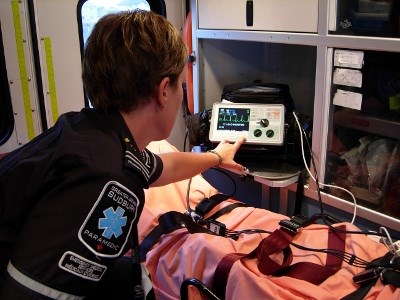UPDATED — June 24, 10 a.m.
City staff are going to take advantage of the windfall from the G8 and G20 summits and purchase new defibrillators to replace aging, older models in use by some of the paramedic fleet.
The city currently uses two types of defibrillators, manufactured by Zoll Medical Canada. The type M defibrillator is the older model, and is scheduled to be phased out within the next two years.
For the last several years, the city has been replacing the type M models with a newer model, the type E.
Zoll is supplying several of the type E models to the province as demonstration models for use during the summit, Tim Beadman, chief of emergency services for the city, said. He didn't have the specific details of the agreement between Zoll and the province.
He said because the defibrillators have been used as demonstration models, they cannot be sold at full price, so after the summit, Zoll is offering them to interested municipalities at a reduced cost.
City council unanimously approved the purchase of nine of these defibrillators as recommended by city staff at the June 23 city council meeting. The model normally costs $28,800, but Zoll will sell them for $20,400 after the end of the summit. That would save the city $8,400 per unit, for a total of $75,600.
"This purchase would accelerate the capital replacement of our defibrillators and eliminate the need for additional purchases in 2011 and 2012," the report to council said.
Standardizing the defibrillator models would provide several benefits to the city, according to the report. They include:
- decreased training time and cost as paramedics would only need to be trained on one model
- enhanced capabilities of the E model
- a single way to mount the defibrillator in the ambulance and on the stretcher, as compared to two
- standardized accessories, rather than two sets
- increased battery capability of the E model, meaning paramedics do not have to carry batteries, as they currently do with the M model
- easier deployment as paramedics want to work with the newer model rather than the old
